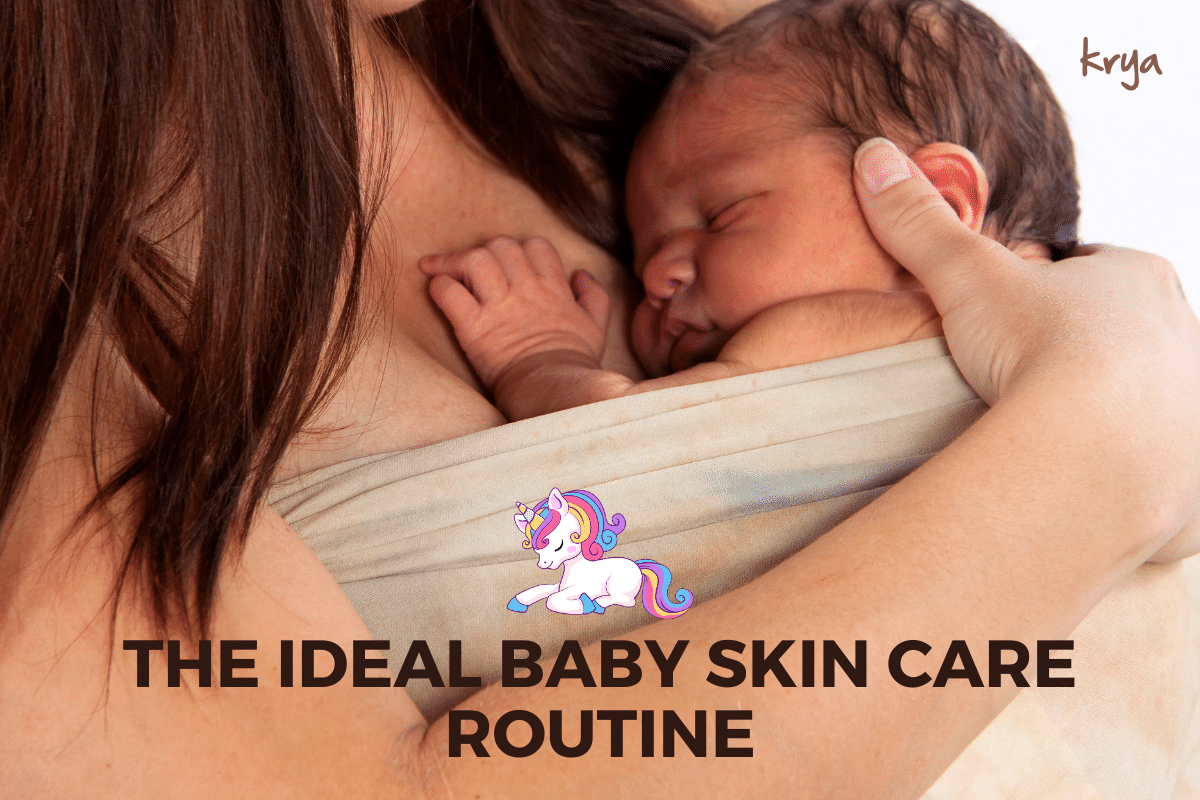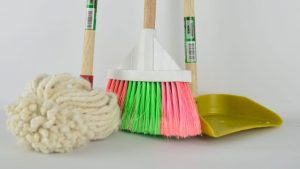This post was last updated on August 12, 2021 by Preethi Sukumaran
We received a call yesterday at the Krya office, which made me understand the depth of the pot we have begun to stir with our posts on sustainable menstruation.
An example of one of these thoughts / queries was a phone call I received yesterday at the Krya office. The lady who called was both a Krya consumer and someone who reads our blog regularly. Inspired by the articles, thought-starters and conversations we have been having around reusable products, she called to ask me if she should take the leap and switch to reusable cloth napkins.
Ms.A told me that she had been thinking about switching to cloth for the last 2 years, and had been following the work of Ecofemme who we had posted yesterday about. But she continued to be hesitant about making the switch.
“I have heavy flow. Do you think using these pads will leave stains on my clothing”, she asked. When countered with my explanation of several layers of cloth and a leak proof barrier, she voiced another concern. “Is it going to be very difficult to wash”? She asked. A ready quip came to my mind about how with the Krya detergent it was going to be easy. But I brushed that aside, and approached her question with more seriousness, and asked myself, if I too had felt that when I switched.
And yes, I had. Many of us grew up hearing stories of our mothers using cloth “rags” to manage their menstruation. My mother grew up in a home where menstruating women were supposed to confine themselves to a particular room designated specifically for that purpose. And with 4 sisters, “the room” was pretty much always occupied.

Menstrual cloth could not be dried along with other people’s clothes and had to be taken down before regular laundry was dried. This meant that several times, the menstrual cloth would be dried in the same room they were confined to. If older women were also confined, this space would also be the space where they cooked food for themselves, as they were not allowed to enter the kitchen.
These stories became a part of my psyche. Leading me to associate the worst with menstrual cloth. Stories of confinement. Of a lack of space. Of being considered impure. Of blood stained rags being hung inside a room, And of the shame of everyone knowing you were menstruating. All of this got enmeshed in my head with the association of cloth.
The advertising that I saw when I was growing up, with the entry of MNCs into India also worked on this long held menstruation story and the association with cloth. “Cloth is for curtains” said the ad, as they showed women coming out of the taboos of menstruation and bravely switching to disposables.
I carried these images in my head. And these images, of redemption were what propelled me to the world of disposables.
Which is why for new entrants like myself into the world of cloth napkins, the difference comes as such a shock. Far from my images of stained, ragged, smelly cloth rags, today’s modern day cloth napkins are a work of art. They borrow several design cues from disposables and many of them come fitted with wings and cut in the shape designed to make menstruation comfortable. These cloth napkins resemble nothing that my feverish imagination conjured up when I was told my mother and my aunts’ menstruation stories.
These cloth napkins are different. Beautiful, sleek, comfortable. Pretty. Yes they offer the comfort that cloth offered my mother’s generation. With much more sturdiness, ease of washing and caring and comfort of use.
My mind spun back to the present as I spoke to my consumer. I described the construction of a modern cloth napkin. Described how easy it was to take care of, and why it worked. Reassured, she said thank you and promised me she would try one out.
As I sat down to think about how the series should continue, I realised many more people like me (before I made the switch) and Ms.A would continue to hold apprehensions of cloth. With the associations that we collectively held.
And the only way to change these associations was to offer the story of another switch. Another perspective of someone who transitioned into sustainable menstrual products. And loved her switch.
So here is Susmitha’s story.
About Susmitha:
Susmitha is a legend in the Indian vegan community. So much so that a trip to Bangalore, where she lives, would be incomplete for most vegans without having the opportunity to meet her and speak to her.
 Susmitha is a jewellery artist and a vegan food blogger. She makes miniature sculptures of very cool vegan monsters like the “Veganosaurus” after whom she has named her food blog.
Susmitha is a jewellery artist and a vegan food blogger. She makes miniature sculptures of very cool vegan monsters like the “Veganosaurus” after whom she has named her food blog.
Her vegan food creations are carefully photographed and displayed to the rest of the world as part of what I could best describe as an “affirmative action series” she has started with other food bloggers called “Vegan temptivism”. Her creations showcase the inventiveness and deliciousness that is possible when you elevate cuisine to an art form, as only a Vegan temptivist blogger can.

When one of my favourite restaurants, Carrots , India’s first vegan and vegan owned restaurant started by Krishna Shastry decided to join forces with Susmitha, every single one of us vegans clapped. And then salivated thinking of how much yummier Carrots food was going to get with Susmitha’s talent added to the arsenal.
It should come as no surprise, given Susmitha’s background that she is an outspoken vegan and environmental activist. She is an avid kitchen gardener, growing many of the micro greens that go into her temptivist fare. And of course, we are proud to share that she is a Krya consumer as well.
Susmitha made the switch to cloth sanitary napkins about 6 years ago. And here is her story.
I first heard about reusable cloth napkins online in my Vegan etsy group.
Everyone was raving about how cool they were and how comfortable they felt, and I was curious to know more about cloth napkins. The idea of using cloth to manage my menstruation actually appealed to me instantly and I started to read more about it online.
When I came across my first cloth napkin brand, I fell in love with the pads.
My researches led me to an etsy seller based in Canada, called Naturally Hip. Her cloth pads were bright, and colourful with happy prints. And her pads looked very thick and comfortable, so I bought a few for myself.
Once I started using them I loved them. And my sister who saw my pads also fell in love and asked me to source more for her – which was a pleasant surprise for me because my Sister was a staunch disposables user and I never thought she would be tempted into switching to cloth.
I transitioned very quickly into cloth after my initial trial.
As soon as I began using cloth pads, I was hooked. I loved how they made me feel with their bright, happy colours and how soft and comfortable the pads felt. I did not realise how uncomfortable disposables were, until I shifted to cloth and saw how comfortable I could feel during my periods.
I had fed myself the marketing messages that I had seen about disposables about how they were thinner, and did not leak, etc. But when I switched I realised how plasticky they would feel, and how they would chafe once I had worn them for a couple of days.
In fact, when I switched to cloth, I was so comfortable that many times I actually forgot I was wearing pads!
Washing menstrual blood did not faze me.
When we were younger and used to use wood pulp napkins, my Mother had taught my sister and myself to rinse out our disposable napkins before wrapping them to throw away in the trash. She had always asked us to be sensitive about this and ingrained in us the need to treat the workers who handle our waste with care.
So we actually grew up rinsing our disposable napkins. Taking care of our menstrual blood was our responsibility, so I had no squeamishness associated with this.
But as I grew up wood pulp napkins began to get replaced in popularity with gel based napkins. Once I switched to gel based disposables, I slowly stopped rinsing my napkins (and it was no longer possible).
But when I switched back to cloth, my years of practice in this helped.
Note from Krya: as Susmitha described this to me, I was transported back in time to my childhood, and remembered my Mother taught me to do the same thing. I was also asked not to carelessly dispose my soiled napkin where someone else would have to handle it or an unsuspecting animal would come across it. So I too rinsed my wood pulp disposable before throwing it away.
Of course, with the advent of gel based napkins, this sensible and sensitive practice ceased to exist as it was no longer possible to continue to do this.
But yes, I did have one apprehension when I switched to cloth napkins.
I was concerned about how I would handle travelling out of my home when using a cloth napkin. So I started gently. I started by using cloth napkins at home and disposable napkins when I was out of the house or travelling.
As time went by and I grew comfortable with using cloth napkins, I began reducing my use of disposables. Now I use only cloth completely even when I go to work or travel on holidays. With a few adjustments I have easily managed to incorporate cloth completely into my lifestyle.

As long as you have access to a private bathroom, any woman can use cloth napkins wherever they are. They are extremely easy to launder and take care of.
I find myself handling my periods much better after switching to cloth.
I find that I am more relaxed and comfortable which explains why I have much less discomfort and symptoms of PMS (although all of that had already reduced when I went vegan). My flow seems more even and everything feels much much better.
I think women should choose cloth napkins in order to treat themselves better during their time of the month.
I’ve actually recommended switching to cloth napkins to all my girlfriends. And while I understand there is a strong environmental and health reason to do so, I never speak about these. I ask them to switch just to see how good they can feel during their periods.
The comfort and the way cloth pads make you feel so outweigh any minor changes in convenience. And with effort you can easily make these work well for you and adopt them into your lifestyle.
Yes washing and caring for your cloth napkins does involve some washing and drying in your bathroom, which may weird out some people.
However I think that women should go ahead and choose products that make them feel good and help them ease any discomfort they feel during their periods. With all that we have to deal with at this time, I don’t think it is fair to expect us to have to deal with anyone else’s discomfort as well.
My husband has been extremely supportive about my switch given how environmentally aware he is as well (Milesh, Susmitha’s husband , is also a vegan and a committed environmental activist in Bangalore).
But even if he had not been, I would have still gone ahead and chosen to use cloth pads because they are good for me. And I guess he would have just come around to it eventually.
I have a simple washing process for my pads.
I wash them once every day. Until then I leave them to soak in cold water, which helps remove the menstrual blood. Once I get around to washing them, I simply rinse out the menstrual blood and then load them into my machine with my other clothes. I run a hot water wash cycle and then dry them with the rest of my clothes.
Cared for this way, my pads are extremely hygienic, wear well, and have worked very well for me.
So if you are a woman reading this, and would like some advice on how to make the switch, I would ask you to switch to cloth pads and have a truly happy period. Enjoy!
Thank you for that happy, rousing and inspirational piece Susmitha.
If you need more convincing, and would like to read more about the problems of disposables, start here:
- Here’s an introduction to the world of reusables
- Here’s where you can find out more about the dangers presented by disposable sanitary products
- Here’s a piece chronicling a Man’s perspective on Reusables and Disposable products
- And here’s the first part of our Interview series: this is an interview of Lakshmi Murthy of Uger Pads, Udaipur
- Here’s Anita chronicling how she shifted to reusable cloth pads.
- Here’s the second part of our interview series:this is an interview of Kathy & Jessamijn of Eco Femme, Auroville
Krya giveaway:
We are going to be giving away 3 cloth sanitary pad starter kits to 3 lucky people: each kit will come in its own reusable cloth bag (for you to shop with) and will contain samples of the Krya detergent along with instructions to wash and care for your cloth pads.
If you would like to win one of these starter kits, all you need to do is this. Follow our posts and updates in this series and tell us one reason why you would like to make the switch to green your period. Head over to our Facebook page to enter now.





Sounds interesting. Definitely worth a try!
Rose: you should . you will love it too!
Hi Susmitha,
Thanks a ton for sharing your experience. I am sure a lot of people will benefit by this.
Krya, thank you for posting this inspiring article.
Thank you Arun!